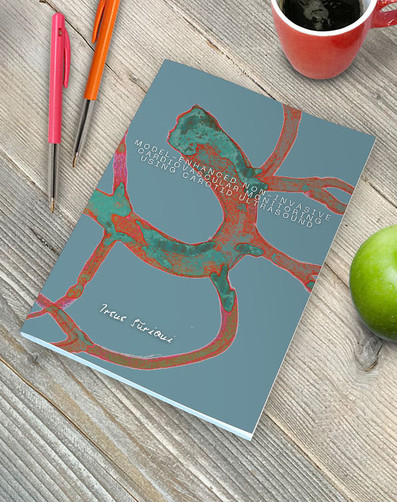
Cardiovascular disease is the leading cause of death worldwide, with arterial stiffness serving as a key indicator of cardiovascular risk. However, its routine assessment is limited due to a lack of reliable and unobtrusive measurement tools. Furthermore, approximately 1 out of 5 patients experience major surgical complications, making perioperative hemodynamic monitoring paramount to guide clinicians in optimizing therapeutic decisions and lifesaving interventions. However, current gold-standard methods to monitor hemodynamic parameters are highly invasive, limiting their applicability.
This thesis investigates model-enhanced carotid ultrasound as a promising non-invasive method for both cardiovascular risk evaluation and perioperative hemodynamic monitoring. The common carotid artery is accessible, favoring accurate ultrasound imaging and blood flow measurement, and reflects central hemodynamic conditions. Yet, interpreting its waveforms is complex due to various physiological factors influencing their morphology. To address this challenge, the thesis integrates carotid ultrasound measurement with computational modeling of arterial pulse waves, providing a tool to interpret and extract clinical parameters of interest from these measurements.
Computational modeling is first leveraged for the development of a virtual population, used to analyze the effects of aging and sex-related differences on carotid waveforms, and to identify carotid ultrasound markers of arterial stiffness. A novel method is then proposed to estimate local carotid stiffness using velocity waveform indices, developed in silico and validated in vivo. The second part of the thesis tackles challenges in the use of carotid ultrasound for hemodynamic monitoring. Coupling carotid ultrasound with patient-specific modeling, the thesis proposes a method to estimate cardiac output from carotid ultrasound measurements and track its changes in patients undergoing cardiac surgery.
In conclusion, the thesis leverages computational modeling to address critical challenges in carotid ultrasound-based cardiovascular monitoring, achieving three main outcomes: improving the clinical interpretation of carotid waveforms, developing a non-invasive method for assessing carotid stiffness, and creating a framework for model-integrated hemodynamic monitoring, with potential applications in perioperative and critical care.
